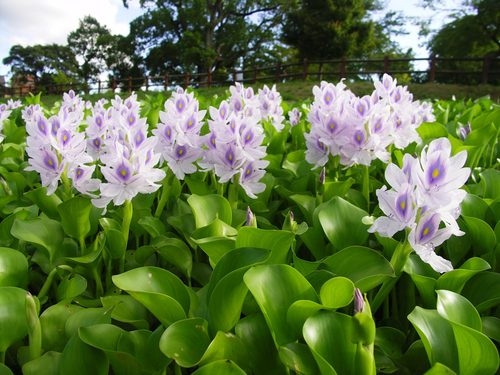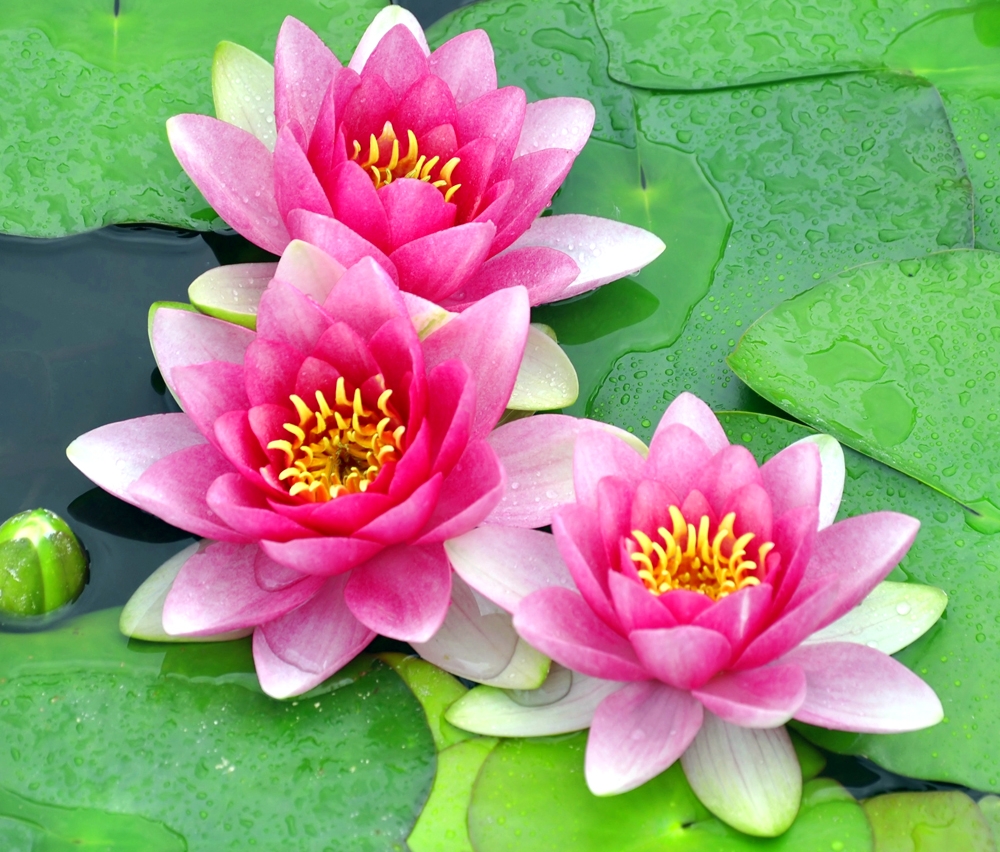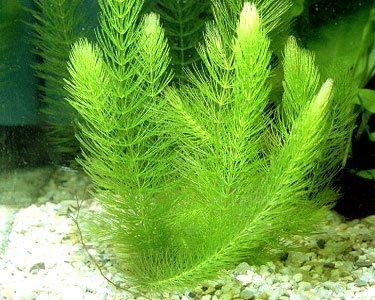We carry a wide variety of aquatic plants here at Masterson's. Here is a bit of info on the different classifications.
Floating Aquatic Plants These aquatic plants do exactly as their name suggests, they simply float on the surface of the water. Their roots stretch down into the water providing many natural benefits. The best, most vigorous floaters, water hyacinth and water lettuce, are tropical plants and will not survive winter in the north.
Floating plants add another dimension to the pond aesthetically, as well as drawing nutrients from the water, shading the pond and providing safety for your fish. Water Hyacinth, Water Lettuce, Salvinia, Azolla and Duckweed are the most common floaters.
Marginal Aquatic Plants Marginal plants grow in wet boggy areas and in water up to 12” deep, depending on the species. This very large family of plants ranges in growth habit from low, creeping type plants to the very tall upright plants like bulrush and iris. There are both hardy and tropical varieties to choose from in a wide spectrum of foliage textures and flower colors.
Adding marginals to the water garden creates a more natural look. Marginal plants make your pond more inviting to visitors such as frogs, giving them a sense of safety. Water Iris, rush, cattails, arrowhead, and marsh marigold are just a few of the countless plants in this category.
Deep Water Plants Water Lilies and Lotus are the two most notable deep water plants. Lilies are usually what you think of when you picture a water garden. Growing from a depth of 12"-36", lilies extend pads all the way up to the ponds surface where you'll often find a frog sitting and sunning itself. When regularly fertilized, they produce numerous flowers throughout the pond season, which open and close with our daily light cycles.
Lotus is a very hardy plant, best suited for the medium to large water garden. It is a very vigorous grower requiring a large container. Preferring about a 12" water depth, its leaves are very large and stand high above the water. Although the lotus has a shorter bloom period than the lilies, its flowers are much larger and more spectacular.
Oxygenators Anacharis, Hornwort, and Cabomba are the most common and are winter hardy in most parts of the country. Every pond should include oxygenating plants. These plants grow mainly along the bottom and are essential to the ecological balance of the pond. They should be planted at the rate of one for each two square feet of surface area. These plants act as natural filters, draw nutrients from the water, provide a haven for your fish and release oxygen which is necessary for the biological balance





